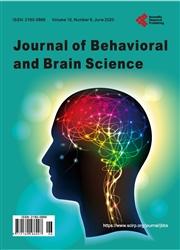Covid-19 Diagnosis by Artificial Intelligence Based on Vibraimage Measurement of Behavioral Parameters
引用次数: 1
Abstract
The hypothesis of behavioral parameters dependence measured from person’s head movements in quasi-stationary state on COVID-19 disease is discussed. Method for determining the dependence of vestibular-emotional reflex parameters on COVID-19, various diseases and pathologies are proposed. Micro-movements of a head for representatives of the control group (with a confirmed absence of COVID-19 disease) and a group of patients with a confirmed diagnosis of COVID-19 were studied using vibraimage technology. Parameters and criteria for the diagnosis of COVID-19 for training artificial intelligence (AI) on the control group and the patient group are proposed. 3-layer (one hidden layer) feedforward neural network (40 + 20 + 1 sigmoid neurons) was developed for AI training. AI was firstly trained on the primary sample of patients and a control group. Study of a random sample of people with trained AI was carried out and the possibility of detecting COVID-19 using the proposed method was proved a week before the onset of clinical symptoms of the disease. Number of COVID-19 diagnostic parameters was increased to 26 and AI was trained on a sample of 536 measurements, 268 patient measurement results and 268 measurement results in the control group. The achieved diagnostic accuracy was more than 99%, 4 errors per 536 measurements (2 false positive and 2 false negative), specificity 99.25% and sensitivity 99.25%. The issues of improving the accuracy and reliability of the proposed method for diagnosing COVID-19 are discussed. Further ways to improve the characteristics and applicability of the proposed method of diagnosis and self-diagnosis of COVID-19 are outlined.基于行为参数振动测量的人工智能诊断新冠肺炎
讨论了在新冠肺炎疾病中,从准静止状态下人的头部运动测量的行为参数依赖性假设。提出了确定前庭运动反射参数对新冠肺炎、各种疾病和病理的依赖性的方法。使用振动成像技术研究了对照组(已确认无新冠肺炎疾病)和一组已确认诊断为新冠肺炎的患者代表的头部的微动。提出了在对照组和患者组上训练人工智能(AI)的新冠肺炎诊断参数和标准。开发了用于人工智能训练的三层(一个隐藏层)前馈神经网络(40+20+1个S形神经元)。人工智能首先在患者和对照组的原始样本上进行训练。对经过训练的人工智能患者的随机样本进行了研究,并在疾病出现临床症状前一周证明了使用所提出的方法检测新冠肺炎的可能性。新冠肺炎诊断参数的数量增加到26个,并对对照组中536次测量、268次患者测量结果和268次测量结果的样本进行AI训练。诊断准确率达99%以上,536次检测有4次错误(2次假阳性和2次假阴性),特异性为99.25%,灵敏度为99.25%。讨论了提高新冠肺炎诊断方法准确性和可靠性的问题。概述了进一步提高所提出的新冠肺炎诊断和自我诊断方法的特点和适用性的方法。
本文章由计算机程序翻译,如有差异,请以英文原文为准。
求助全文
约1分钟内获得全文
求助全文

 求助内容:
求助内容: 应助结果提醒方式:
应助结果提醒方式:


